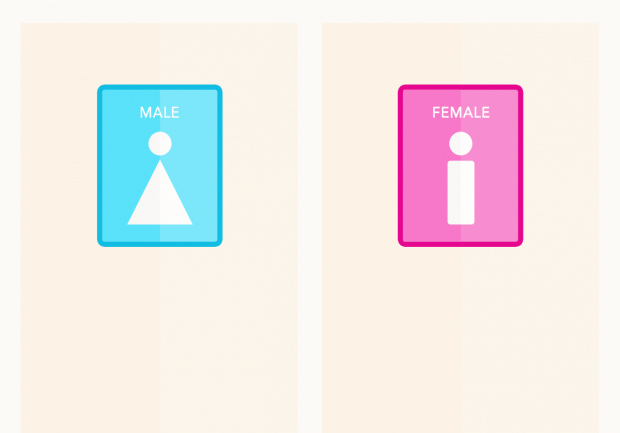Those of us who are cisgender may not understand how complex gender identity and gender expression can be, and that’s because we live in a heteronormative culture that says there’s just men and women. In reality, there’s more than that. In the gender spectrum, there are gender identities that are shades of male and female, and gender identities even beyond male and female.
Among these many gender identities is transgender, and it’s an identity that’s (rightfully!) sparked a lot of conversation, especially in light of Caitlyn Jenner’s Vanity Fair cover. However, Caitlyn didn’t go from Bruce to Caitlyn real quick. The transitioning process is one that takes a lot of mental and physical preparation, and it’s a long, long process of trying to be who you really are. Preen got to talk to two transgender people on their experiences.
Gender confusion
Growing up, Janlee Dungca, who works in PR, identified as a gay boy, but she noticed that the way she carried herself at the time was more feminine than other gay boys. During her junior year of college, she took a Psychology class, where she came across the term “transgender.” That was when she realized that she wasn’t a gay man, but a transwoman.
On the other hand, Nick Fernandez, a transman, recalls the exact moment when he felt like something was off with his body. He recalls that when he was six years old, he and his male cousins played basketball, and when they had taken off their shirts, he did, too. At the time, he still had a female body. “My grandfather scolded me, saying [taking off shirts] was not something that girls did. I remember feeling confused because the urge came naturally and I could not understand how ‘unnatural’ it was,” he shares.
He had also spent years of his life identifying as lesbian, thinking that “being a lesbian had something to do with me wanting people to see me as a guy, only to find out that the term ‘lesbian’ is a form of sexual attraction and not an identity.”
There are thousands of transgender people across the world, but what people may not understand is that not all of them necessarily feel like they have to transition from their biological sex to the sex associated with the gender they identify with. However, for Janlee and Nick, that physical transition was important to them.
Transitioning pains
Janlee wanted congruence with how she felt and what she saw when she looked in the mirror. Nick felt the same way. That’s how the transition began.
First, it starts with a lot of research and mental preparation, and then a consultation with a doctor. Both Janlee and Nick were referred to their doctors through transgender friends.
The hormones that Janlee takes, she says, are acquired over-the-counter: the testosterone blockers Spirinolactone and Finasteride, and estrogen supplements Oestradiol. (She recommends the site Transgendercare.com for information on dosage and effects.)
There are also other side effects that come with taking the drug—Janlee reports that she was much more emotional during this time and felt fatigued more easily, but she did not feel the expected bout of depression that other transwomen have felt while taking hormones. She feels fortunate for having a strong support system that help her get through.
On the other hand, Nick says he had a more difficult time looking for ways to legally acquire the drug required—a testosterone injectable—for his Hormone Replacement Therapy. For him, the worst part of taking the hormones was the social adjustment—because his hormones were raging, he was more irritable, which affected his relationship with his partner.
As far as surgeries go, Janlee says that gender reassignment surgery—the surgery that changes your genitalia—is not a priority for her. Nick, on the other hand, has already had a double mastectomy, which he says is the “highlight” of his transition, as his chest was the cause for his body dysphoria.
And because they’re transgender, they deal with new gender roles. Janlee says that she’s more careful now when she’s out. Prior to transitioning, she always felt that being a man meant that no harm could really befall her in public places. But now that she is a woman, she is more cautious of her surroundings—a feeling of fear that every woman in this day and age is familiar with.
For Nick, dealing with legal documents is still a pain. “I have had past experiences where I was denied of services or questioned extensively because of how I look versus what my documents say,” he shares.
No turning back
Now, Janlee and Nick are both well-adjusted, happier than ever, and they only have advice to give for those who are thinking about medically transitioning as well.
Nick admits that, at the beginning of transition, he didn’t realize that the changes would come bit by bit. “Transitioning is a lifetime commitment to the medical and mental process,” he says.
Looking back at her experience, Janlee says that she would’ve appreciated if she learned about the transgender identity earlier than college. It would have saved her a lot of confusion about who she was, and it would make everyone more aware and accepting of the transgender community.
Although the struggle of transitioning is not something that we’re all going to fully understand (especially as cisgender people), becoming someone we’re proud of being is something all humans strive for. Loving who we see looking back at us in the mirror is a goal we all have in common. As an endnote, Nick says, “You do not transition to become who you are; you are already who you are and that is why you transition.”
Art by Dorothy Guya


